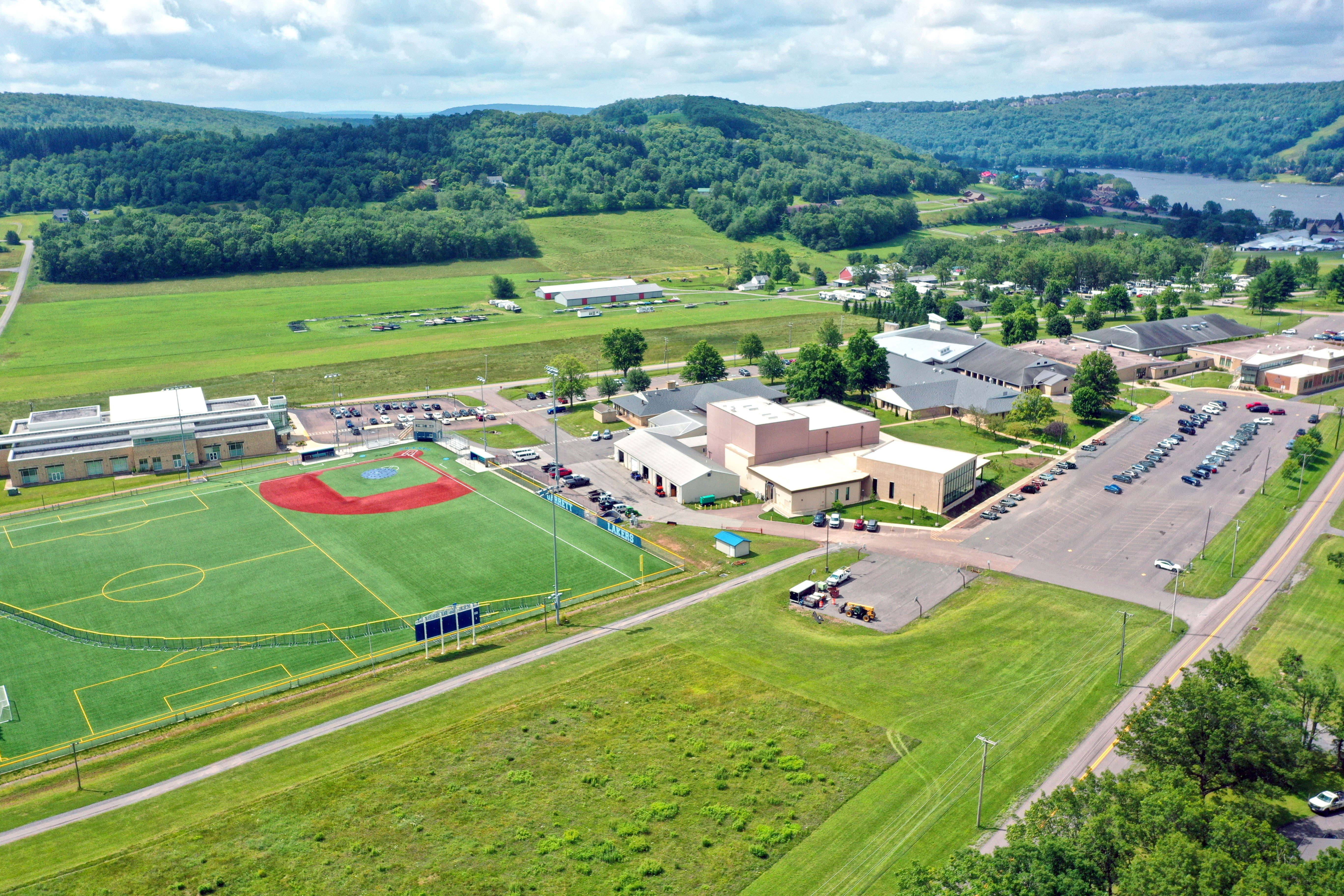Campus News
July 22nd, 2025
GC strategic plan improves key success metrics
College reports 27 indicators all moved in positive direction

Garrett College closed out its Fiscal Year 2021-25 Strategic Plan after improving outcomes in 27 key metrics, according to College officials.
Garrett College has closed out its Fiscal Year 2021-25 Strategic Plan after improving outcomes in 27 key metrics.
"These are really impressive results," said Dr. Richard Midcap, Garrett College's president. "I've been involved in six strategic plans at two colleges, and you always hope to move the most important metrics in a positive direction. We identified 27 of the most important metrics – and they all made significant progress over the last five years."
Dr. Kelli Sisler, GC's director of institutional effectiveness, said the metrics selected were critical to evaluating the College's progress in serving its students and community.
"We wanted to choose metrics that were meaningful to our mission," said Sisler, who is also the College's accreditation liaison officer.
Highlights of the College's FY21-25 Strategic Plan Closeout Report included:
- 16.7 percent increase in credit student headcount.
- 12.3 percent increase in student credit hours.
- 75.2 percent increase in High School Dual Enrollment headcount.
- 8.2 percent increase in students in satisfactory academic standing.
- 8.5 percent increase in fall-to-spring retention for first-time, full-time students.
- 30.6 percent increase in fall-to-fall retention for first-time, full-time students.
- 133 percent increase in student athletes.
- 98.4 percent increase in students living on campus.
- 88.9 percent increase in revenue, and 35 percent increase in Full-Time Equivalents (FTEs), in the Continuing Education & Workforce Development (CEWD) Division.
- 3.7 percent decrease in employee base.
Professor Christa Bowser, GC's chief academic officer, said the increases in retention rates and percent of students in satisfactory academic standing required a College-wide effort.
"Tutoring enhancements, expansion of our Early Alert system, and increased faculty engagements all helped move these indicators," said Bowser. "It takes a whole college effort to move students toward their goals."
Dr. Robert "JR" Kerns, dean of student affairs, said the increase in student athletes and the near capacity of the residence halls have created a richer campus environment.
"These numbers reflect more than just growth—they represent a revitalization of our campus life," said Kerns.
"Having more student athletes and nearly full residence halls has strengthened our sense of community and created a more vibrant, engaged student experience," added Kerns. "At the same time, this growth has positively impacted the College's financial stability, allowing us to reinvest in student programs and support services."
CEWD exceeded $1 million in revenue ($1,047,481) for the first time in College history. The division's revenue rose 17.8 percent between FY24 and FY25, and increased nearly $250,000 over the past two fiscal years.
"During the course of the Strategic Plan, the CEWD team remained committed to outreach and engagement with prospective students, the business community, and our partners," said CEWD Dean Julie Yoder. "These efforts, along with new program development, resulted in the achievement of the division's annual goals while effectively serving the needs of our community."
Lisa Nichols, GC's dean of administrative services, said the College has been able to increase reserve funds over the life of the strategic plan while also targeting significant reserve fund allocations to improve campus facilities.
"The College more than doubled its fund balance between FY21 and FY24," Nichols said. "As a result, we've been able to commit more than $2 million in college funds toward four important renovation projects that enhance the student experience and support recruitment growth – the café/kitchen, our student services facilities, the addition of a radiologic technology classroom, and the repurposing of the 700 Building to support our expanding intercollegiate athletics program."
GC recently launched its FY26-30 Strategic Plan after a broad-based development process that included the College's faculty, staff, administrators, trustees, and students, as well as representatives of county government, Garrett County Public Schools, social services, members of the business community, and residents.
"I have every confidence that the College will be as successful implementing the new plan as we were in implementing the previous plan," said Midcap.






